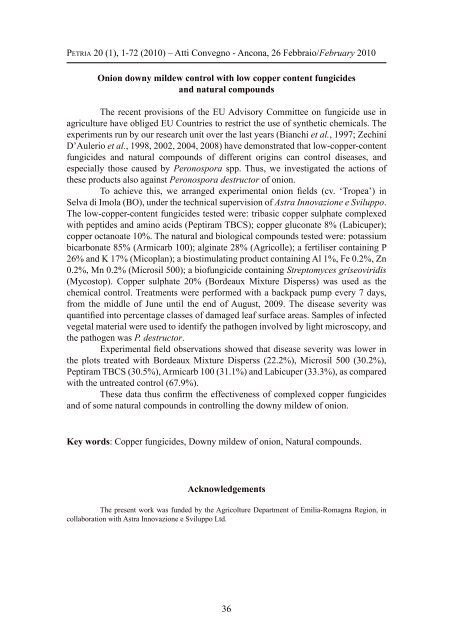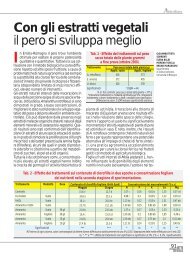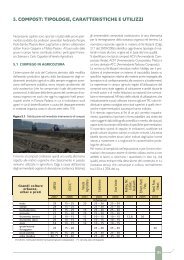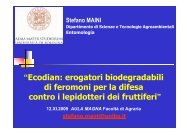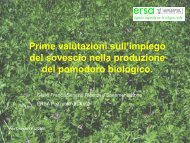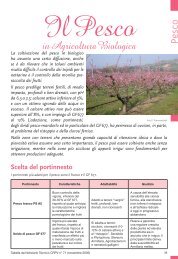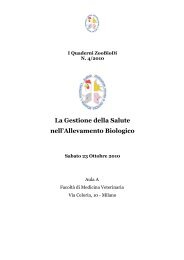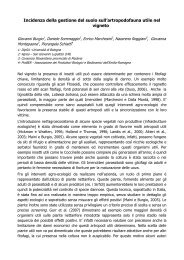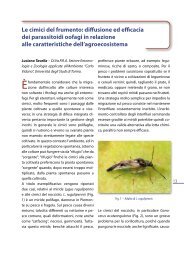Create successful ePaper yourself
Turn your PDF publications into a flip-book with our unique Google optimized e-Paper software.
Petria 20 (1), 1-72 (2010) – Atti Convegno - Ancona, 26 Febbraio/February 2010Onion downy mildew control with low copper content fungicidesand natural compoundsThe recent provisions of the EU Advisory Committee on fungicide use inagriculture have obliged EU Countries to restrict the use of synthetic chemicals. Theexperiments run by our research unit over the last years (Bianchi et al., 1997; ZechiniD’Aulerio et al., 1998, 2002, 2004, 2008) have demonstrated that low-copper-contentfungicides and natural compounds of different origins can control diseases, andespecially those caused by Peronospora spp. Thus, we investigated the actions ofthese products also against Peronospora destructor of onion.To achieve this, we arranged experimental onion fields (cv. ‘Tropea’) inSelva di Imola (BO), under the technical supervision of Astra Innovazione e Sviluppo.The low-copper-content fungicides tested were: tribasic copper sulphate complexedwith peptides and amino acids (Peptiram TBCS); copper gluconate 8% (Labicuper);copper octanoate 10%. The natural and biological compounds tested were: potassiumbicarbonate 85% (Armicarb 100); alginate 28% (Agricolle); a fertiliser containing P26% and K 17% (Micoplan); a biostimulating product containing Al 1%, Fe 0.2%, Zn0.2%, Mn 0.2% (Microsil 500); a biofungicide containing Streptomyces griseoviridis(Mycostop). Copper sulphate 20% (Bordeaux Mixture Disperss) was used as thechemical control. Treatments were performed with a backpack pump every 7 days,from the middle of June until the end of August, 2009. The disease severity wasquantified into percentage classes of damaged leaf surface areas. Samples of infectedvegetal material were used to identify the pathogen involved by light microscopy, andthe pathogen was P. destructor.Experimental field observations showed that disease severity was lower inthe plots treated with Bordeaux Mixture Disperss (22.2%), Microsil 500 (30.2%),Peptiram TBCS (30.5%), Armicarb 100 (31.1%) and Labicuper (33.3%), as comparedwith the untreated control (67.9%).These data thus confirm the effectiveness of complexed copper fungicidesand of some natural compounds in controlling the downy mildew of onion.Key words: Copper fungicides, Downy mildew of onion, Natural compounds.AcknowledgementsThe present work was funded by the Agricolture Department of Emilia-Romagna Region, incollaboration with Astra Innovazione e Sviluppo Ltd.36


